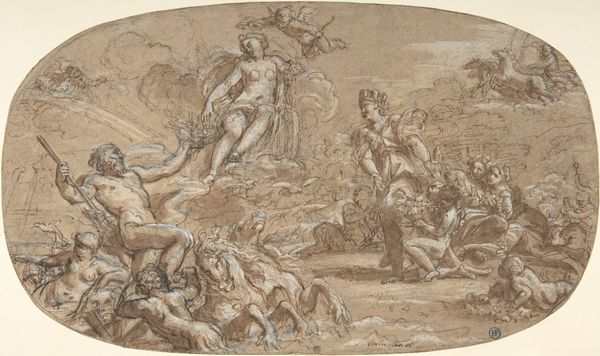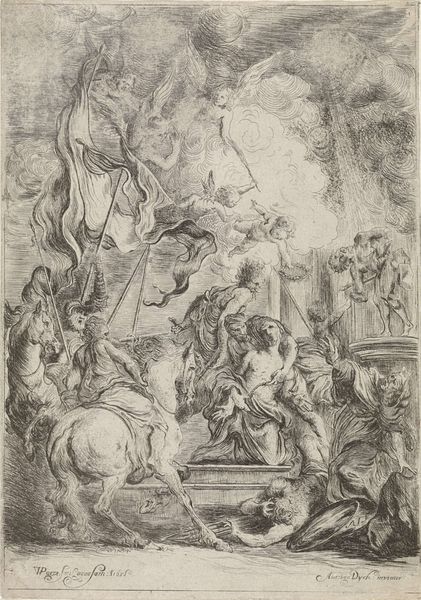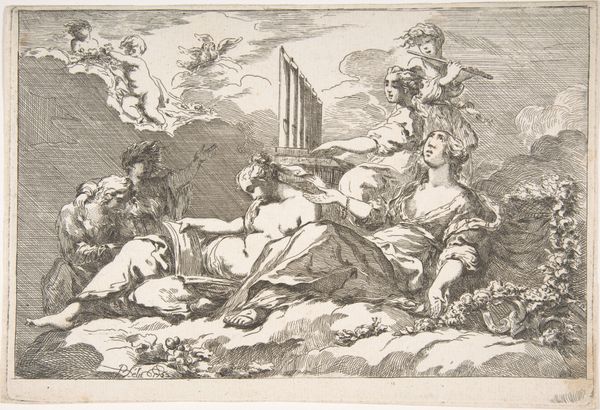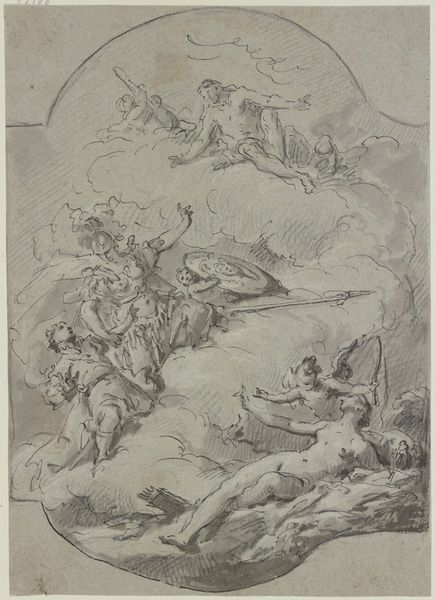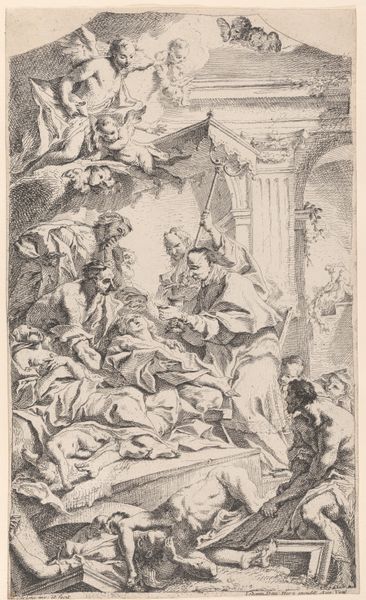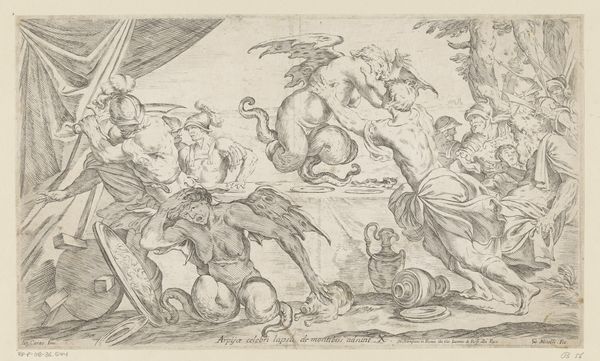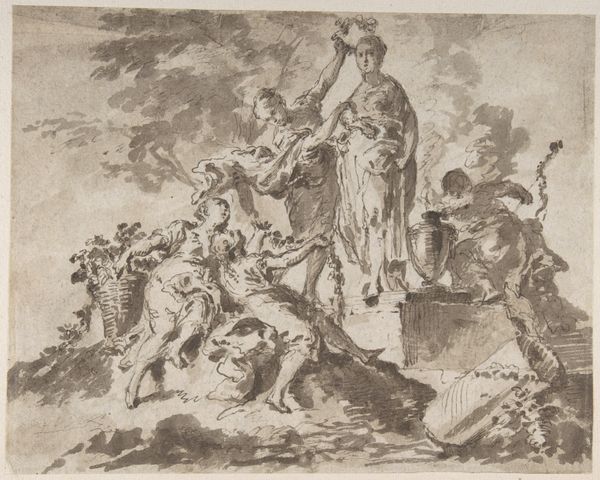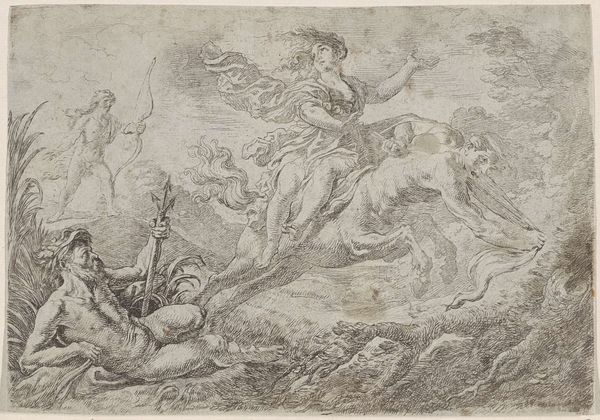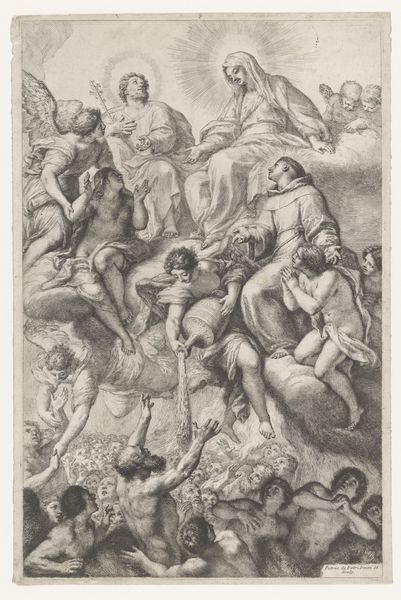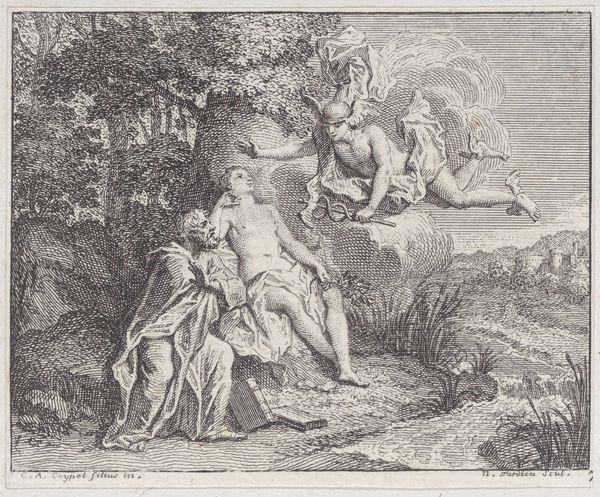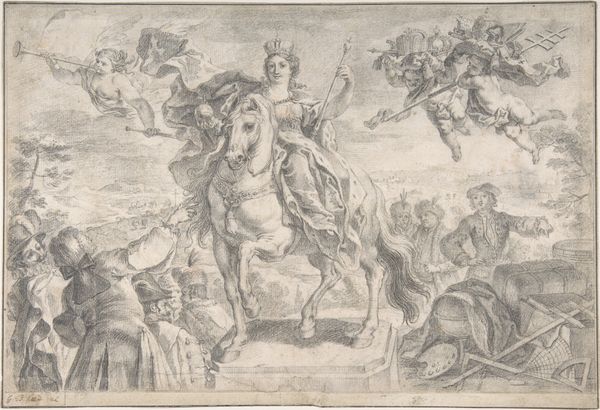
engraving
#
allegory
#
baroque
#
figuration
#
history-painting
#
nude
#
engraving
Dimensions: height 271 mm, width 368 mm
Copyright: Rijks Museum: Open Domain
Curator: What strikes me immediately about Cornelis Schut’s engraving, “The Rape of Europa,” made sometime between 1618 and 1655, is the sheer dynamism conveyed through such fine lines. The image teems with figures – both human and divine. Editor: Dynamic is certainly one word for it. My initial reaction is a bit more conflicted. There's a celebration of power, certainly, but also an unsettling undercurrent of forced abduction. The “rape,” or abduction, itself is sanitized, made almost idyllic by the frolicking cherubs. How can we reconcile the seemingly playful composition with the violence inherent in the story? Curator: The engraving captures a pivotal moment from Greek mythology, of course, Zeus, in the guise of a bull, abducting Europa. Looking closer, we see those frolicking cherubs, emblems of love and desire, but notice the composition as a whole? The figures are clustered, interwoven. Is this chaos a deliberate comment on power imbalances? Editor: Exactly. We need to situate this work within its historical context. Europa’s abduction isn’t just a mythological tale; it's been interpreted as an allegory for conquest, domination, and the power dynamics between Europe and other continents. Seeing the engraving, I can't help but read its imagery through a lens of colonial narratives and gendered violence. Curator: Perhaps. The bull itself can be read as a potent symbol, linked across many cultures, but within the framework of the Classical, Zeus's choice of disguise subtly emphasizes deception and the masking of brute force. I can imagine the intended audience recognized those symbolic languages from a range of sources. Editor: Absolutely, and it raises critical questions about how such narratives are constructed and perpetuated visually. How can we grapple with these legacies today, in an age increasingly attuned to the realities of power, colonialism, and patriarchy? Should works like these be reinterpreted and reassessed? Curator: This piece remains powerful, a complex piece that prompts important discussion. Looking closely at the technique here allows one to begin that analysis, to discern some potential contemporary parallels in other works. Editor: Yes. Understanding that visual rhetoric helps to create a contemporary critique is so necessary, a decolonizing and intersectional approach is crucial when exploring a work like this.
Comments
No comments
Be the first to comment and join the conversation on the ultimate creative platform.

